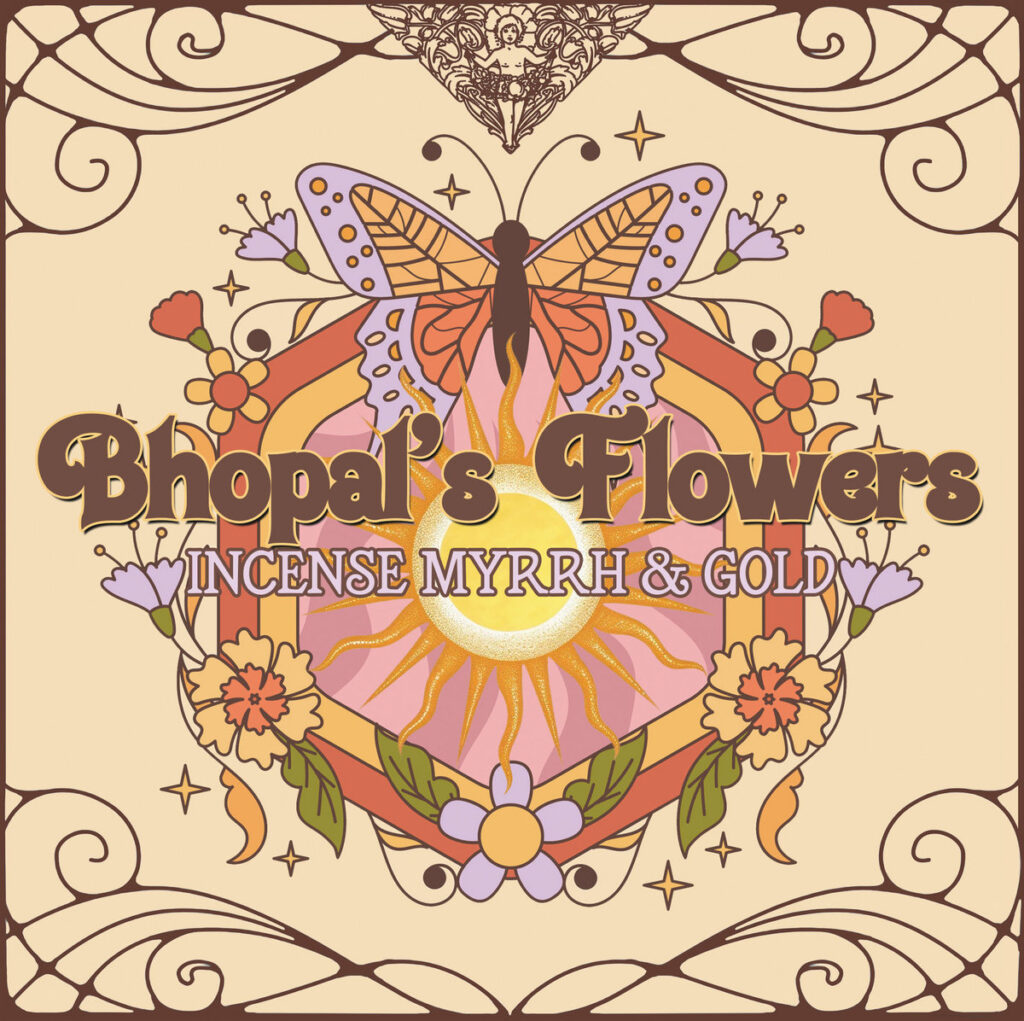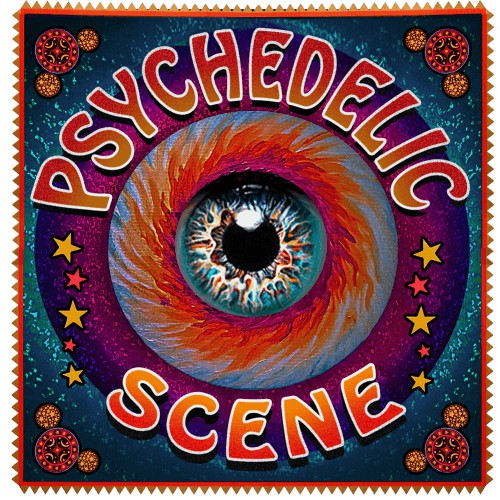Three Bells by Ty Segall–Album Review
Three Bells by Ty Segall–Album Review
Ty Segall returns this week with the sprawling, double-length album Three Bells. Following up to 2022’s “Hello, Hi,” this outing features Segall playing most of the drum, bass, and keys, along with his iconic, charred-fuzz, electric guitar leads, and subtler, acoustic textures. He also enlists his wife Denée Segall’s vocals on two tracks, and they stand out as some of the best on the album. Ever prolific, Segall has recorded a dozen solo LPs and a series of other-named projects since 2008, and Three Bells is the next piece in his psyche-fuzz evolution.
Like most Segall albums, there’s a ton of catchy garage rock here. This time, it’s interwoven into tumbling blankets of prog-rock patchwork, and bassy 60’s grooves. Lyrically, the narrative at times focuses on the insides and outsides of self, nature, and objects of love. There are
Lyrically, the narrative at times focuses on the insides and outsides of self, nature, and objects of love.
moments of innocence and romantic declaration in Three Bells, that offer a surprising vulnerability. But the gravel of over-driven distortion and oddness of note intervals play with the accessibility of the tonal textures, and one imagines, quite intentionally.
To borrow terminology from fashion, the titular bells might well refer to pattern mixing, pattern matching, and pattern clashing, that is to say, songs falling in and out of sync with themselves. There’s a mischief playing out in these songs that pushes and pulls, like a capricious riptide. Sometimes the bass melodies mix with the vocality of the guitar leads, sometimes they match, and often, they clash.
Though known for his guitar-craft, Segall’s chops on drums and bass are impressive here. The songs have funky, traveling, transcendent low-ends, created by Segall with help from journeyman Emmet Kelly on bass.
The melodic shapes on the album are served up in sci-fi-styled intervals, and arpeggiated scales. A blender-full of acoustic/electric rock, rounded out by electric piano and spacey synth sounds, Three Bells feels like a spiritual meditation, contrasting rings of sound both throwbackand futuristic, the singularity chasing its own tail. The result is familiar and surprising all at once.
Three Bells feels like a spiritual meditation.
Album opener “The Bell” is a prog-rock, acoustic entreaty to the outside (great outdoors), the wild self, and ultimately the infinite. Musically and lyrically, we are engulfed in concentric rings, tempo shifts, and album signature, strange-shaped arpeggios, as Segall croons “Round and Round.” It’s a dizzying engulf, as the outro cautions: “When I fall down all I see/Numbers infinitely/So I say instead “Goodbye to my head.”
Denee Segall
“The Void” has melodic elements that bring “Ween” to mind, “The Void’s,” haunting vocal chorus, saturated guitar octaves, and horror-music keyboards evince the twingey intervals of a trip. This particular trip starts as seemingly channeled instructions: “Now, silent being/No more reason/Only joy/Stop conversation/And experience joy/And walk.” But once outside, comes the discomfort of the unknown. Segall’s, tenacious drumming seems to hold the horrors at bay, as the narrator apprehends: “In here I realize/It’s all fake what I’ve seen outside.” The third act brings a catharsis from the elements of matter: “Hello./Through a mirror you’ll see clearer/The stones are made of dust And the metal is only rust.”
“I Hear,” and “Hi Dee Dee’s” saturated, heavy bass and octave/phased guitars, recall the sexy, drunk-stomping vibes of Queens of the Stone Age. The compressed, over-driven fuzz toes a line between muscular and menacing.
“My Best Friend,” is a sweet homage to a dog, wrapped in a jaunty, off-kilter rocker. The twangy riff rock on the verse has the frenetic energy of a hyper dog, barreling through their domain. There’s something endearing about the line, “And when we are walking people want to say hello/ They know your name. It’s engraved.” It’s a testament to Segall’s ironic emotional register, that this heavy, squalling attack of staccato fuzz describes the simplest pleasure, the most meaningful of friendships, the one we can have with our dog, “All I need is my best friend, I do.”
C. Elliott
“Reflection”‘s jammy, wistful meditation on journeying within swirls with octave intervals. It makes intuitive sense since an octave is another version of itself, the same note at a different frequency. “Reflection” is another “invitation,” albeit, with a harbinger at the gate: “Just reach out and touch reflection/You can get to know the places inside you/Just invite yourself/You can get to know the faces inside you/Just describe yourself and go/But, “watch out!”
“Move,” gives a standout moment for Three Bells. Featuring vocals from Denée Segall, guitar by Emmet Kelley, bass from Mikal Cronin, and drums via Charles Moothart, this hypnotic and loudest of bells is entrancing, hard, nasty. In a sense, it’s an off-kilter song about romantic pull and magnetic attraction, with D. Segall’s seductive droning: “Moving/you come to me/I move though I move to you too/Together we can move.” If “Move” doesn’t get you moving, nothing here will.
“Eggman” is phantasmagorical, catchy-cringe at its best/worst. As number 8 in this 15-song track list, “Eggman” is effectively a bridge, and the song may stay with you, whether you want it to or not. Guitars and vocals de-tune, and drums slide sideways at times. There’s a groove, and it hooks, but it also feels heavy, like riding the gravitron. The Lovecraftian word “mephitic,” meaning foul-smelling, noxious, applies here. “Eggman,” is a take-down by an unknown critic, “Hey! Do you hear what I say? Would you look at your face? Your mouth’s agape and caked with eggs.” And “Hey I’m talking to you, do you know what you do? You sit and rot your mind with thought.” As a bridge, it’s one you just might want to throw yourself off.
Jason LeValley
“My Room,” provides another dialectic on inside/outside in all its allegorical senses. The fuzz is strong here, overpowering at times, ear-drum retreating provocation. The single-keyed solo has an acidic insistence. There’s the waiting and loneliness of staying inside one’s self, or one’s domicile: “I’ve heard nothing, I’ll just keep waiting by my door in case I hear you knocking.” And the sense of having an undiluted self in staying put, “Out there I am nothing/I am something inside my room.”
Ween-like and prog-rockish, “The Watcher,” feels post-apocalyptic, brooding, and menacing, but delivers a strong, resonant outro that makes the discomfort of the wistful journey feel worthwhile. Perhaps the titular watcher is consciousness itself. The enigmatic line “False bell ringing loud” hints at one of these bells as Maya, the Vedic notion of our third-dimensional “reality” as a magic show, an illusion where things are what they appear to be: “To look upon the ether (Look away)/I am the watcher/Memory killer (I can not say)/I am the watcher.”
On “Repetition”, one imagines if the Beatles had produced music in the darkened landscape of 2024, they might sound a bit like Segall here, a bleak, acoustic round with the only lyrics “Repetition, ringing….”
Image from "My Best Friend" video edited and directed by Ty Segall
“To You’s” breezy, intoxicating, groove owes much to Segall’s percussion, and here it’s truly impressive, tight, and interesting. However, the synth-y alien bells here may subtract more than they add. The lush chorus – “I’m coming back to you” feels like a phone call from the road to the one back home. It intermixes with trilling, instrumental verses that have a washboard twang to them. And suddenly the song takes a hard left turn into a wholly different, phased-out, jam, with the romantic: “Just keep singing, so we can dance forever….”
With Denée, lyrically just “Denée, Denée,” A fingerboard exercise becomes a 60’s bass/drum/organ jam.
Appealing, acoustic closer, “What Can We Do,” features a duet with Ty and Denée Segall sharing a perhaps private implication: “I’ll ask the air, I’ll ask the sky/But before I know it you have replied/”I know what to do…me and you.”
Co-producer Cooper Crain, who contributed to Harmonizer and “Hello, Hi,” engineered and mixed most of the album. The leads sometimes veer into over-driven, “Blue Box” territory. Whether this will excite one’s ears, or cause them to retreat, is probably specific to taste and tolerance. Like Queens of the Stone Age’s latest, “In Time New Roman,” there is a density and airlessness to the mixes that sound claustrophobic, or killer, depending on the moment. It’s a simultaneously exciting and unnerving ride.
Some of Three Bells transitions are so unexpected that they can feel like stepping over a boundary into a shadowy elsewhere. Like a Lovecraftian/eldritch horror, the shadow side of Three Bells is the unease of the incomprehensible and unknowable. But these scary voids are juxtaposed and at times alchemized by the familiar island bastions of nature, a room of one’s own, romantic love, and canine devotion.
Related: The Top 100 Psychedelic Rock Artists of All Time
Gallery
Recent Articles
Incense Myrrh & Gold and Jingle Bells by Bhopal’s Flowers – Holiday Singles
•
December 25, 2025
A Tale of Crescendo ~ Chapter 1: The Arrival; Chapter 2: The Nethermore
•
December 21, 2025

Loading...
Incense Myrrh & Gold and Jingle Bells by Bhopal’s Flowers – Holiday Singles
- Bill Kurzenberger
A Tale of Crescendo ~ Chapter 1: The Arrival; Chapter 2: The Nethermore
- Bill Kurzenberger
Podcast with Wendy Perkins Shoef: Metabolic Ecology of ADHD and Microdosing with Intention
- Jill Sitnick
Interview with Brian Chambers – 60 Years of The Grateful Dead Retrospective
- Bobby Nuggz








